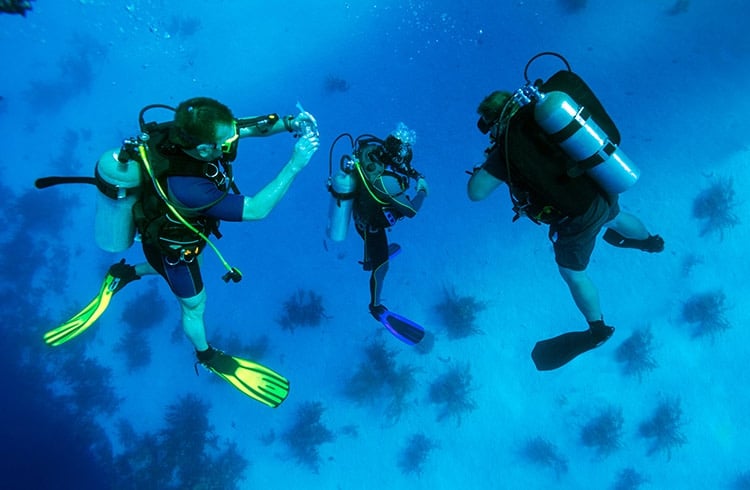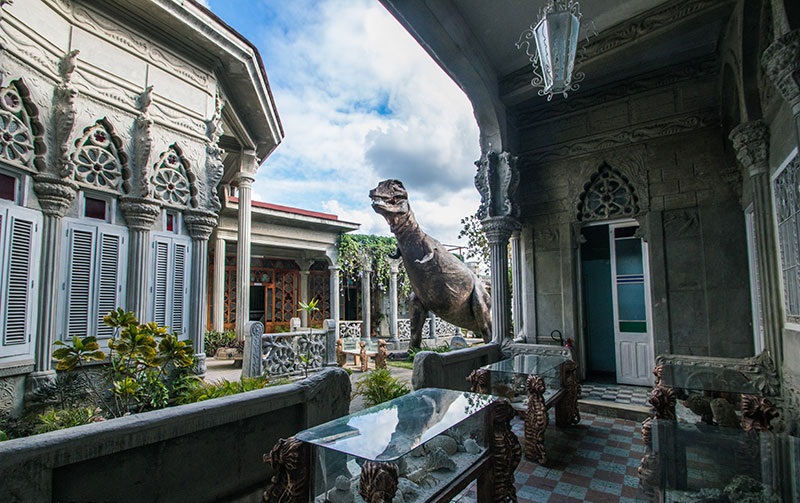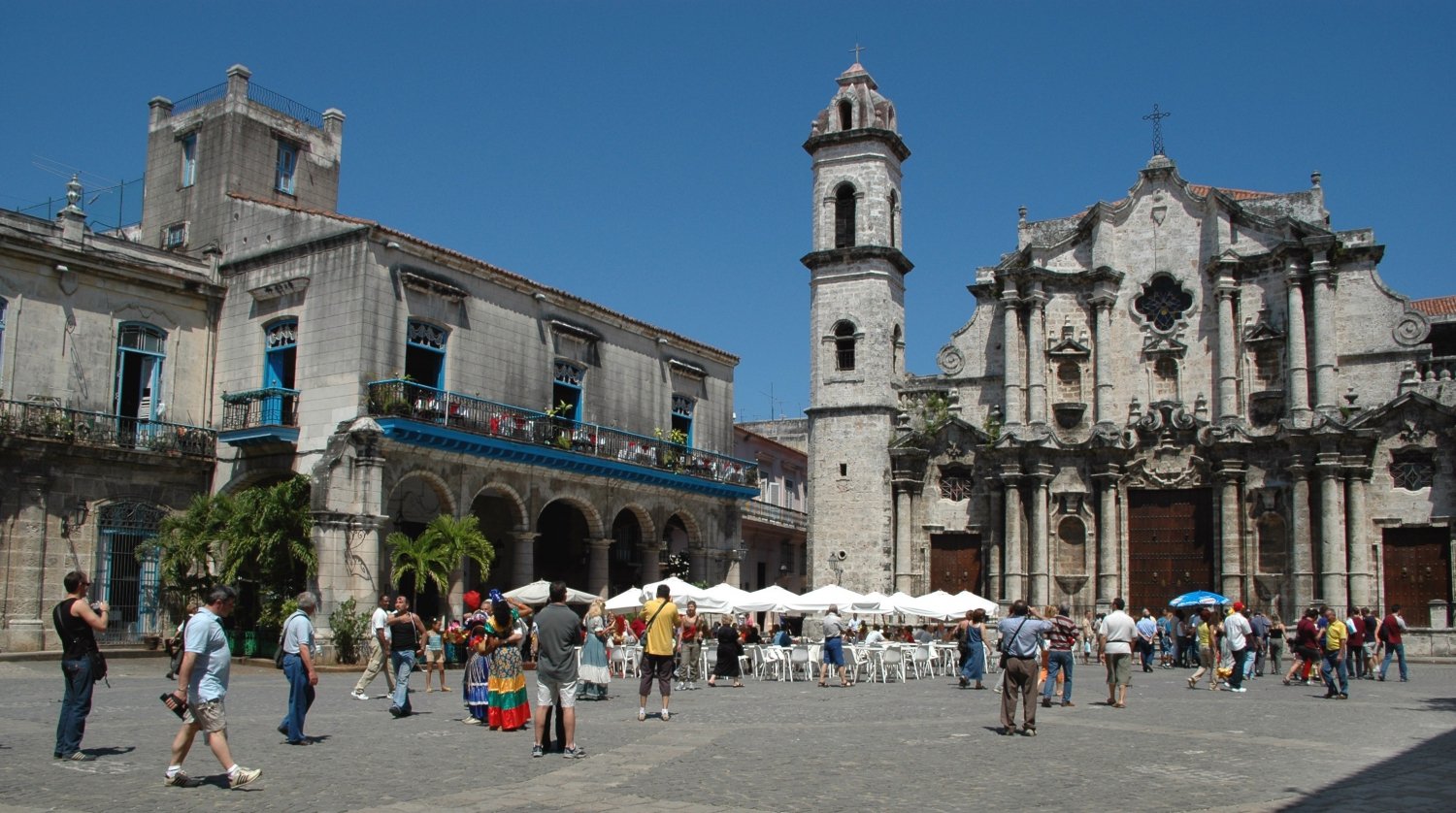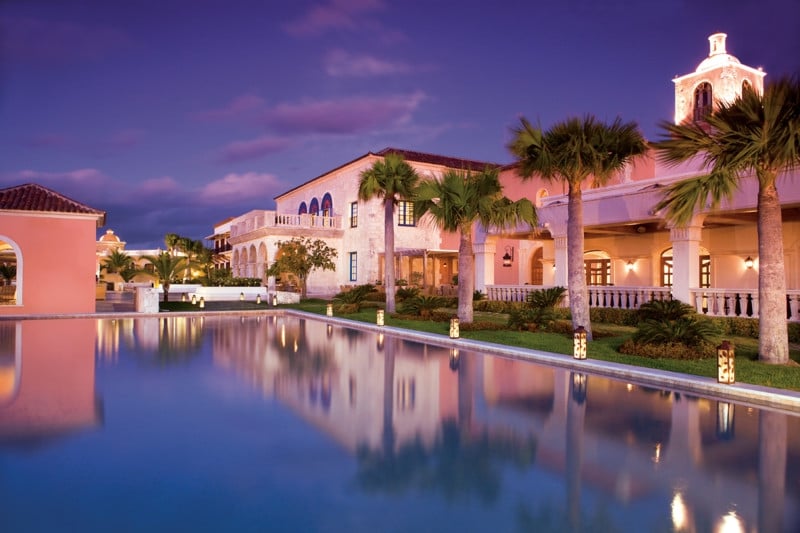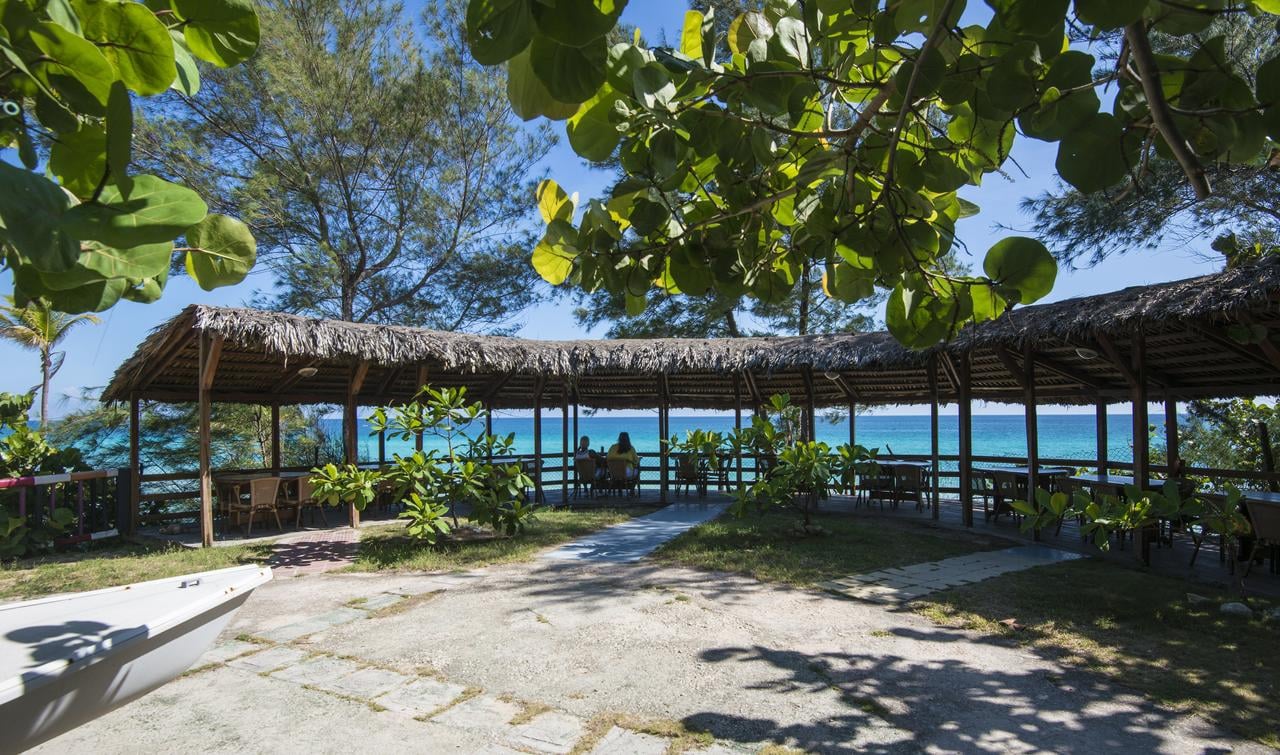Local Recommendations
Explore the World like locals
My Guide to Cuba
Local News & Articles
-

Cuba closes the country to tourism
The Cuban government has made a drastic turn in its policy of confronting the coronavirus, which until now had not contemplated restrictions on the entry of tourists, and has announced that as of Tuesday only residents of the country will be able to travel to the island, and these will have to undergo a preventive quarantine of 15 days at an assistance center upon their arrival, whether they have symptoms or not.
-

Varadero, the largest sun and beach tourism destination in Cuba
Varadero is considered the most important sun and beach destination in Cuba. Its main natural heritage can be appreciated in the paradisiacal coastline of more than twenty kilometers along its coast, where a strip of fine white sand combines in a fascinating way with the spectacular turquoise waters of the Caribbean.
-

Travel Agencies To Cuba, Everything Changes But Everything Remains The Same
We spoke with the presidents of two of the travel agencies that know the Cuban market very well, because they have been selling this destination among the Americans for several years.
-

The Top 10 of the Best Tourist Places in Cuba to visit.
On your trip to Cuba visit the beautiful city of Varadero. Located in the province of Matanzas, about two hours from Havana-Cuba, is considered the closest point to the United States, bordering the city of Florida.
-
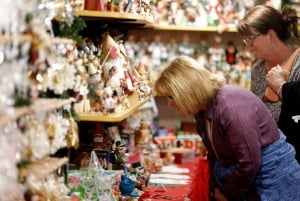
Christmas in Cuba? Havana smells of roasted piglet and salsa can be heard from homes
Cuban Christmas Eve is a great fiesta in the rhythm of reggaeton and salsa instead of Christmas carols. The snow does not creak underfoot, no one is queuing for a carp or Christmas tree, and the smell of roasting pig hovers in the afternoon heat throughout Havana. Holidays and New Year's Eve in Cuba look completely different than ours. And yet you can find many similarities. It is primarily a family, warm atmosphere and joyful fun until dawn on New Year.
-

Melia Cuba: on the reopening of its hotels.
Gabriel Escarrer, executive vice-president and managing director of Meliá Hotels International, has pronounced on the return of the famous Spanish chain to reopen to tourism.
-

How do Cubans Celebrate the Valentine's Day?
The bride and groom, according to their economic possibilities, give each other cards or any other kind of entertainment to celebrate and celebrate that day. They also do it and exchange messages, friendships and friends. Many even give an engagement ring to their partner.
-

Cuba quarantines more than 40,000 tourists and restricts the movement of its citizens
Drastic turning point in Cuba. In view of the fact that a large part of the population continued to live their lives with little change despite the measures taken so far to confront the coronavirus -measures that appealed above all to self-control and individual conscience, without obligatory quarantines or prohibitions to go out into the streets-, the government announced this Monday a package of radical actions aimed at halting the spread of Covid-19 on the island.
-

Architectural route in the city of portals
A very attractive route to get to know Havana is through its most emblematic neighborhoods. For architecture lovers, that route can also be very interesting. The neighborhoods show the mixture of styles and influences that make up Cuban architecture and culture, where Spanish, Arabic, Italian, Greco-Roman, French or North American come together. They contain within themselves picturesque and striking elements, an attractive architecture and various activities for the enjoyment of locals and visitors.
What's On in Cuba
-
FEATURED

Thu 10th Jul Cartagena, CO: Sunset Skyline Pirate Boat Tour with Drinks
Thu 10th Jul, 2025 Cuba CubaDiscover the real history behind the pirates of Cartagena on a sunset cruise. Admire stunning waterfront views of the bay while sipping delicious cocktails from the select open bar.
Check availability$37.85From -
FEATURED
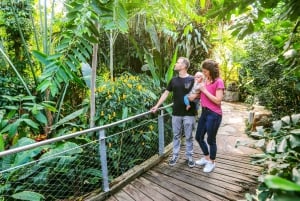
Wed 9th Jul Hanover: SEA LIFE Entry Ticket
Wed 9th Jul, 2025 Cuba CubaImmerse yourself in the underwater world with tickets to SEA LIFE Hanover. Admire colorful fish, sharks, turtles, and other marine wildlife.
Check availability$21.56From -
FEATURED

Wed 9th Jul Secret Food Tours San Francisco
Wed 9th Jul, 2025 Cuba CubaYou will have the opportunity to discover both the local latino inspired dishes as well as the myriad of cultures that have made their imprint on the Mission today.
Check availability$83.07From -
FEATURED

Wed 9th Jul Punta Cana: Guided Bar Crawl with a Rum Shot and Transfers
Wed 9th Jul, 2025 Cuba CubaJoin a guided pub crawl in Punta Cana. Explore the liveliest neighborhoods and the best bars, including Wacamole. Have a shot of Dominican rum to get started and immerse yourself in local nightlife.
Check availability$18.89From $34.99 -
FEATURED

Wed 9th Jul From Punta Cana: Higüey Guided Safari Tour
Wed 9th Jul, 2025 Cuba CubaVisit the most significant attraction of Higüey on a guided tour, highlighted by the Basilica Nuestra Señora de la Altagracia. Walk through the city and enjoy a panoramic view of the municipal market
Check availability$75.00From -
FEATURED
Wed 9th Jul Seville: City Sightseeing Hop-On Hop-Off Bus Tour
Wed 9th Jul, 2025 Cuba CubaExplore Seville with a 24-hour City Sightseeing hop-on hop-off bus tour. Marvel at the mix of Christian and Islamic monuments, enjoy 2 free walking tours, and access to some of the city’s attractions.
Check availability$27.89From -
FEATURED

Wed 9th Jul From Puerto Plata Priv: Cocoa, Coffee, Cigars & Local Market
Wed 9th Jul, 2025 Cuba CubaExplore the Dominican Republic's interior and discover the authentic Caribbean. See local cocoa groves and chocolate manufacturing, and enjoy coffee in a country house, markets, and a cigar factory.
Check availability$200.00From
Book Experiences in Cuba
-
FEATURED
 Best Seller
Best SellerFrom Punta Cana: Higüey Guided Safari Tour
22 ReviewsVisit the most significant attraction of Higüey on a guided tour, highlighted by the Basilica Nuestra Señora de la Altagracia. Walk through the city and enjoy a panoramic view of the municipal market
Check availability$75.00From -
FEATURED
 Best Seller
Best SellerSecret Food Tours San Francisco
85 ReviewsYou will have the opportunity to discover both the local latino inspired dishes as well as the myriad of cultures that have made their imprint on the Mission today.
Check availability$90.78From -
FEATURED
 Best Seller
Best SellerCartagena, CO: Sunset Skyline Pirate Boat Tour with Drinks
207 ReviewsDiscover the real history behind the pirates of Cartagena on a sunset cruise. Admire stunning waterfront views of the bay while sipping delicious cocktails from the select open bar.
Check availability$43.50From -
FEATURED
 Best Seller
Best SellerFrom Puerto Plata Priv: Cocoa, Coffee, Cigars & Local Market
2 ReviewsExplore the Dominican Republic's interior and discover the authentic Caribbean. See local cocoa groves and chocolate manufacturing, and enjoy coffee in a country house, markets, and a cigar factory.
Check availability$200.00From -
FEATURED
 Best Seller
Best SellerSeville: City Sightseeing Hop-On Hop-Off Bus Tour
3934 ReviewsExplore Seville with a 24-hour City Sightseeing hop-on hop-off bus tour. Marvel at the mix of Christian and Islamic monuments, enjoy 2 free walking tours, and access to some of the city’s attractions.
Check availability$31.61From -
FEATURED

Miami & Key West: One-Way Transfer by Motor Coach Bus
16 ReviewsTravel in comfort between Miami and Key West on a one-way on a double decker coach bus. Relax with air-conditioned climate control, reclining seats, a restroom on-board, and complementary Wi-Fi.
Check availability$61.54From -
FEATURED

Costa Brava and Medieval Villages Full Day Tour
11 ReviewsVisit 3 of the most beautiful villages of the Costa Brava and 2 of the most charming medieval villages in the area. Discover small coves, castles, and more.
Check availability$169.78From -
FEATURED

Miami: Little Havana Walking Tour (Lunch Option Available)
21 ReviewsDiscover the Cuban culture of Miami's Little Havana neighborhood on a walking tour. Led by a local expert, learn about the history, meet the locals, smell the cigars, and hear the Caribbean music.
Check availability$40.80From -
FEATURED

NYC: Buena Vista Social Club the Musical on Broadway
6 ReviewsBroadways most fabulous party! Buena Vista Social Club explodes with Brilliant, Vibrant, Music and Dancing! - The Daily Beast
Check availability$100.30From
-

Things to do in Havana
Handpicked by a Local Expert
-

Things to do and best tours in Cuba
Handpicked by a Local Expert
-

Best experience and tours in Cuba
Handpicked by a Local Expert
-

Best city tours in Havana
Handpicked by a Local Expert
-

Best and most reliable airport transfers in Cuba
Handpicked by a Local Expert
-

Best tours in and around Varadero, Cuba
Handpicked by a Local Expert
-


10 Best Tourist Places in Cuba
Handpicked by a Local Expert
-


Valentine's Day in Cuba
Handpicked by a Local Expert
-


Best water activities in Cuba
Handpicked by a Local Expert
-


Things to do in Cuba
Handpicked by a Local Expert
-


Icon places to see in Cuba
Handpicked by a Local Expert
-


World Heritage Sites in Havana
Handpicked by a Local Expert
-


Holidays Tips for your January Trip to Cuba
Handpicked by a Local Expert
-


National Parks in Cuba
Handpicked by a Local Expert
-


Outdoor Activities you can enjoy in Cuba
Handpicked by a Local Expert
-


Best Cocktails in Havana, Cuba
Handpicked by a Local Expert
-


Restaurants to try in Cuba
Handpicked by a Local Expert
-


Spectacular Hiking Trails routes in Cuba
Handpicked by a Local Expert
-


Museums in Cuba
Handpicked by a Local Expert
-


Holiday Rentals around Cuba
Handpicked by a Local Expert
-


Selection of the best Cuban cigars
Handpicked by a Local Expert
-


Best cigar lounges in Cuba
Handpicked by a Local Expert
-


Buying cigars in Cuba
Handpicked by a Local Expert
-


Icon places to see in Havana
Handpicked by a Local Expert
-


Beautiful Castles in Cuba
Handpicked by a Local Expert
-


Paradise Places in Cuba
Handpicked by a Local Expert
-


Most beautiful beaches in Cuba
Handpicked by a Local Expert
-


Beautiful Cayos of Cuba
Handpicked by a Local Expert
-


Best Hotels Boutiques in Havana
Handpicked by a Local Expert
-


Best all inclusive hotels in Cayo Coco
Handpicked by a Local Expert
-


Best all inclusive hotels in Varadero
Handpicked by a Local Expert
-


Best all inclusive hotels in Habana
Handpicked by a Local Expert
-


Best all inclusive hotels in Cuba
Handpicked by a Local Expert
Regional Guides
-
Artemis
Artemis is a new province on the island of Cuba located west of Havana. This province was constituted after the territorial division of the old province of Havana that surrounded the capital in the provinces of Artemisa and Mayabeque.
-
Camaguey
Camagüey is the easternmost province, with the largest area and flattest in the center of the island of Cuba. It has few mountainous groups and is flanked by the two largest archipelagos in the country: to the north, Sabana-Camagüey and, to the south, Jardines de la Reina. Both still retain virgin areas in which to seek tranquility. The climate does not vary excessively throughout the year, the average annual temperature is 24.7 ºC.
-

Ciego de Avila
In the 19th century, immigrants from Haiti, Jamaica, the Dominican Republic and Barbados arrived in the province, bringing with them an immense variety of cultural curiosities such as the cricket of Baraguá, the voodoo of Venezuela, the country of Majagua or the fireworks of Chambas. Thanks to all these peculiarities, these immigrants made Ciego de Ávila one of the most peculiar provinces of Cuba.
-

Cienfuegos
The city of Cienfuegos, which was founded in 1819 in Cuba, retains a fairly homogeneous urban core in terms of architecture, full of classic facades and slender columns that provide an environment reminiscent of nineteenth-century France in which it was inspired. In fact, the city was founded by a French emigrant (Don Luis D’Clouet).
-

Granma
Its wild nature and its geographical location do not place it in the first place in the list of places to visit, although it is worth enjoying its rugged landscape, its santeria and the authenticity of the Cuban street dances that are held every Saturday. in the city, as if it were a ritual. The music of the organs at night and the appetizing smell of food float in the Caribbean night.
-

Guantanamo
Guantanamo province is the most eastern of Cuba. It is characterized by having a mountainous surface that caused the isolation of the rest of the island for more than four centuries. Known for the establishment of the American Naval Base in the town of Caimanera in 1902, this beautiful territory has great and impressive places to enjoy an unforgettable vacation.
-

Havana
Havana, capital of Cuba, is a city full of paradoxes and contradictions, whose main attractions are the beauty of its historic center, its exceptional architecture, the revolutionary and Cuban iconography (from El Malecón to the Plaza de la Revolución, passing through La Giraldilla) and its wide cultural offer. The history of Havana is really fascinating, and in it you will find interesting museums, impressive restoration projects, and a magnificent musical culture that ranges from street music to cabaret.
-

Holguin
Holguín province is the third largest in Cuba and over the years it has become one of the main industrial areas of the island. The beauty of its fields and beaches have made this province the third tourist center of the country. Holguín covers throughout the different municipalities that compose it imposing natural parks, such as the Christopher Columbus Natural Park, which, in turn, collects perfect natural enclaves for ecotourism such as the Bariay Monument National Park or the Naranjo Bay Park.
-

Isla de la Juventud
Isla de la Juventud is a very special municipality in Cuba that is located in the south of the island. Until 1978 it was called Isla de Pinos, but by decision of the National Assembly of Popular Power and announced by President Fidel Castro, the island adopted its new name in honor of the thousands of young people who studied there and collaborated in the development and the reconstruction of the island after Hurricane Alma in 1966.
-

Las Tunas
Las Tunas, name derived from the characteristic vegetation of the area, is not an excessively large or popular province. Considered the eastern part of Cuba, closer to Haiti than to Havana, the one known as the "Balcony of the East" also has its own charm. Its history and folklore are in every corner of this region more rural than other areas of Cuba, but for this reason much more welcoming.
-

Matanzas
Matanzas is the second largest province in Cuba behind Havana and one of the most contributing to the economic development of the island. It is located in the western region of Cuba and, except for the highlands of the northwest and center of the province, the entire surface of Matanzas is flat. With a tropical climate almost all year round, it attracts many tourists who arrive in search of sun and beach, since Matanzas contains one of the most precious pearls in Cuba, Varadero.
-

Mayabeque
Mayabeque is the smallest province of Cuba. It is a productive place, where citrus, tobacco, wine grapes and cane sugar are especially grown for Havana Club rum, whose distillery is also found in this province. Tourists, mostly Cubans, travel here attracted by its beautiful sandy beaches and the Jibacoa Beach resorts, which offers beachside accommodation at a much more affordable price than in Varadero.
-

Pinar del Rio
Pinar del Río is the province with the most protected areas in all of Cuba, as it has two places declared a Biosphere Reserve by UNESCO, the Guanahacabibes Peninsula and part of the Sierra del Rosario; a UNESCO World Heritage site, the Viñales Valley and several natural areas full of excellently preserved flora and fauna
-

Sancti Spiritus
Sancti Spíritus is the only province in Cuba that can boast to house two of the first seven villas founded at the beginning of the 16th century by the Spanish forward Diego Velázquez: Sancti Spíritus and Santísima Trinidad. Today the historic center of Sancti Spíritus still retains buildings that show the wide diversity of architectural styles that enriched its convoluted urban framework for three centuries, among which the Main Parish Church, the Main Theater and the bridge over the Yayabo River stand out.
-

Santiago de Cuba
Santiago de Cuba is the second most important city in the Caribbean country. It is located in the south of the island and has witnessed throughout the history of important historical events since the time of the Spanish colonization.
-

Villa Clara
Strategically located in the center of the island of Cuba, Villa Clara has always been the nucleus of colonizers and revolutionaries who disputed material benefits. The pirates were a headache during the first years of colonialism in the first city of the island, Remedios, which was later abandoned due to a large fire. But his demography grew again with the arrival of Canarian settlers who brought their agricultural knowledge to tobacco plantations.
We Are Part of the My Guide Network!
My Guide Cuba is part of the global My Guide Network of Online & Mobile travel guides.
We are now in 180+ Destinations and Growing. If you are interested in becoming a local travel partner and would like to find out more then click for more info about our Website Business Opportunity.
Nearby Destinations
Create New Guide
Filter Events by Sub-Category
Please select a Date first.








